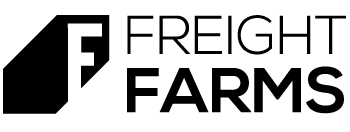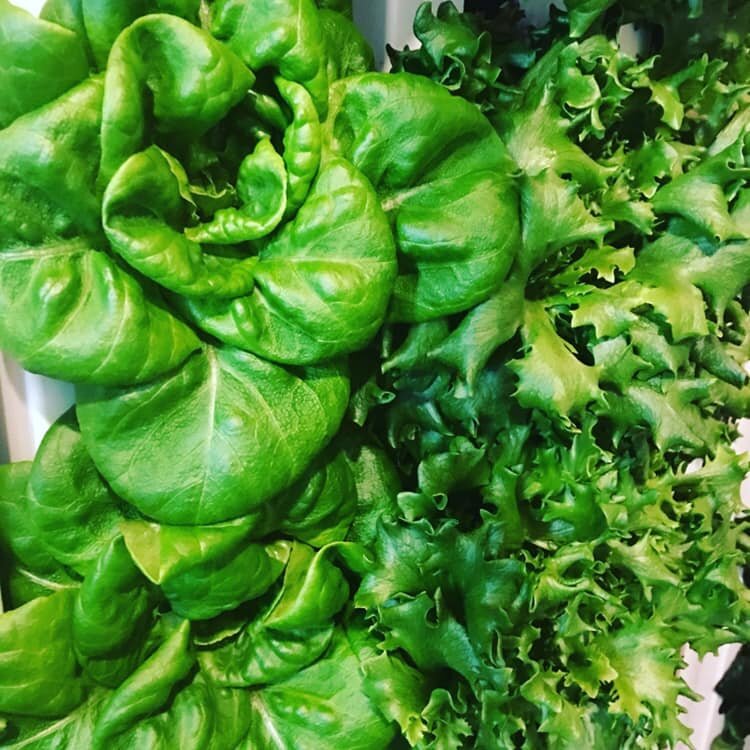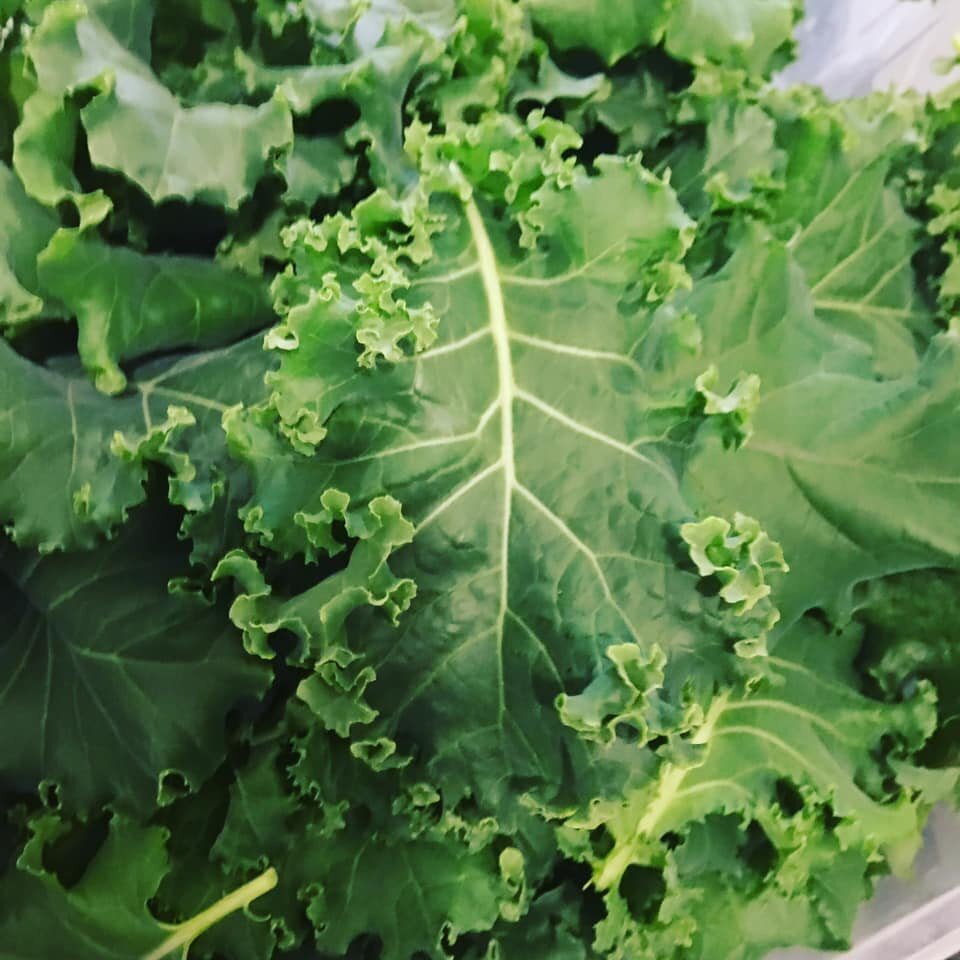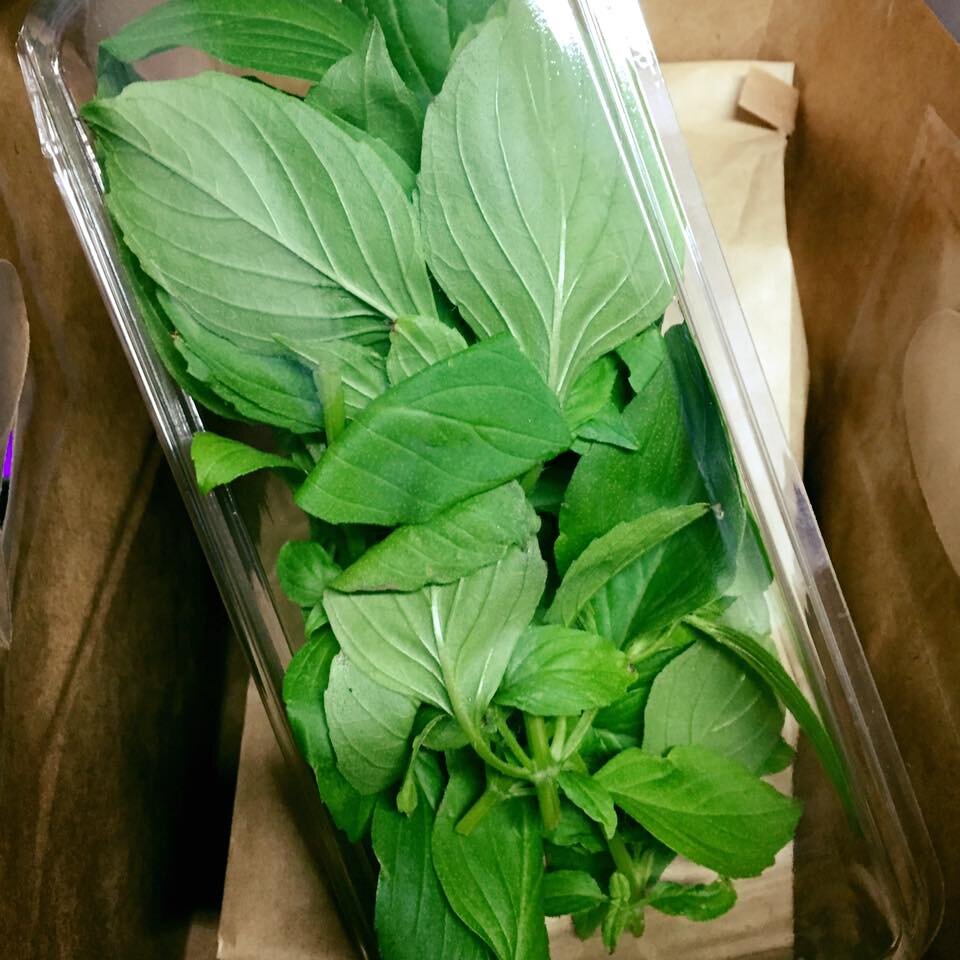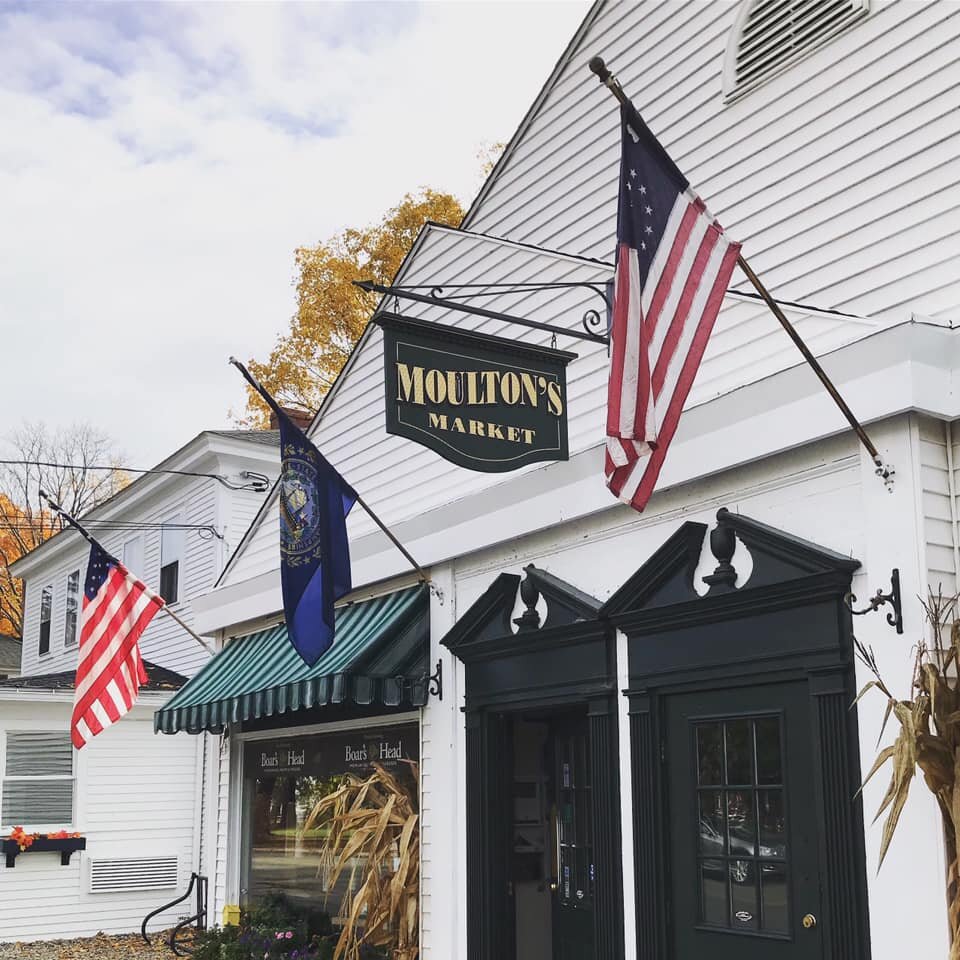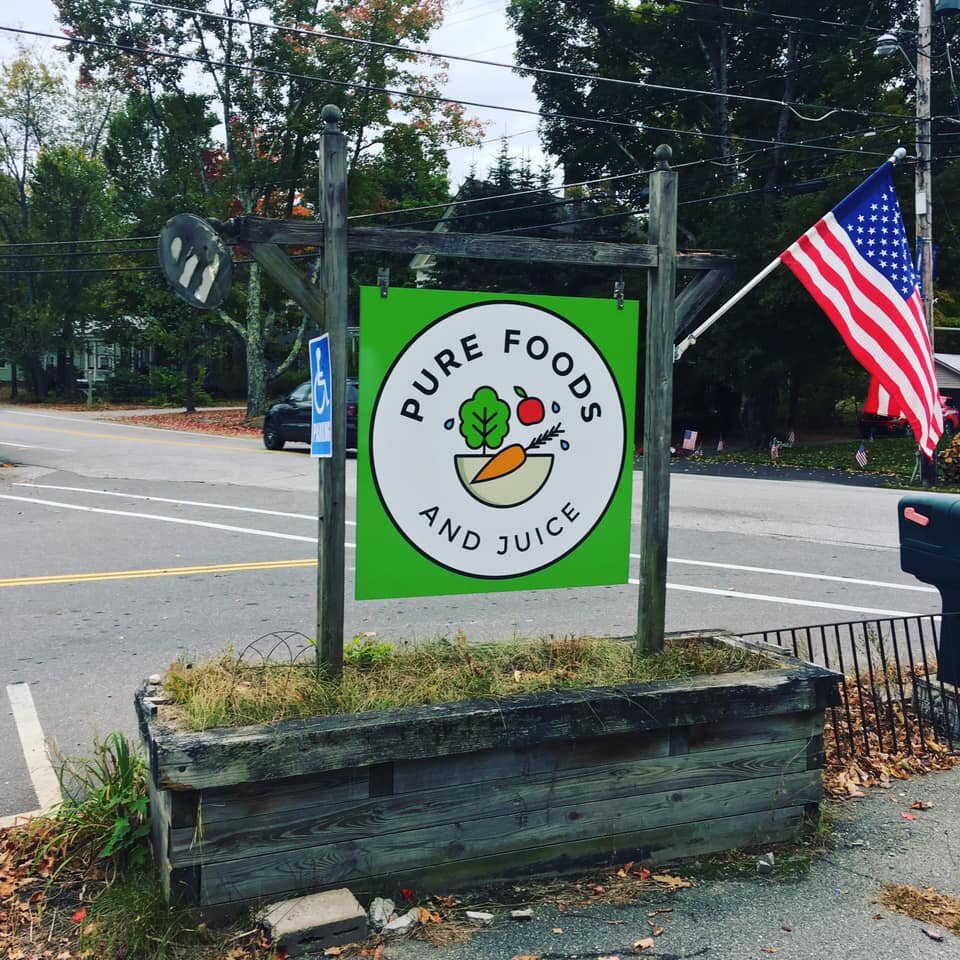How to Run a Successful CSA
Sarah from Oasis Springs shares how she runs her CSA business
On December 12th, 2019 we hosted a webinar with Sarah Ward from Oasis Springs Farm, How to Run a Successful CSA. During our conversation we talked about how Sarah decided that the CSA business model was right for her, what the benefits of a CSA are for the farmer and customers, and how she tackled the challenges of distribution.
Overview of Oasis Springs Farm
Sarah started farming in mid-2016. Her company, Oasis Spring Farm is based in Nashua, NH. Sarah’s 2016 Leafy Green Machine is located at her family home in Nashua, making it easy for her to take care of her plants and two sons at the same time.
Sarah’s farming journey began when left her Marketing and Public Relations job to be home with her kids. She was looking for a hobby to keep her busy while also becoming more involved with the local food scene in Nashua. Sarah was disappointed by the limited options available during the long New England winter and started a small hydroponic growing operation at home to grow basic fresh greens–lettuces, herbs, etc. As they were looking more into hydroponics, Sarah and her husband Chris came across Freight Farms and realized they could turn their hobby into a business.
Starting a CSA
Sarah’s farm was delivered in July 2016 and by that September she had harvest her first crops and was ready to start selling. Her first move was to join a Nashua farmers market, but she quickly realized she couldn’t rely on the market model: Not only were the farmers markets not consistently attended, but something as small as rain or a Sunday football game could drastically impact attendance and her bottom line. She also had to think of her work-life balance. Farmers markets were almost always on weekends, which would cut into her free time with her family. After attending a few farmers markets, Sarah decided to switch to a CSA business model, and the rest was history!
What is a CSA?
The term ‘CSA’ has become a popular buzzword in the world of local food and small farmers. The acronym stands for Community Support Agriculture, meaning that members of a local community comes support their farmers by pledging to buy food from them. While this system can work in a few different ways, Sarah’s CSA uses the most common format. Oasis Springs Farm offers a weekly share program, meaning people pay in advance and get a delivery of farm-fresh goods every week for a set length of time.
Benefits of a CSA
Sarah started her weekly CSA in October 2016 and has been delivering shares to fellow Nashuans ever since. While growing and developed her offering, she has become increasingly aware of the benefits of her business model, both for herself and her customers.
For the farmer
A CSA guarantees a sale before anything is even planted. As Sarah prepares for the next CSA ‘session’, she knows exactly how many customers she will have every week, making it easy to plan everything ahead of time. Collecting payment in advance also ensures that she can cover all the costs of operating the program.
The CSA model is flexible enough that you can use everything you harvest for the week. A CSA customer has agreed to take whatever Sarah is harvesting that particular week, so Sarah can adjust her shares as needed, substituting strong performing crops for weaker ones.
For the customer
A CSA guarantees a weekly delivery of healthy food. Sarah believes that when you have healthy options in your fridge, you’re more likely to eat them. Plus, when customers get to eat vegetables just hours after they are harvested, they enjoy the experience much more and are encouraged to continue eating healthfully.
A CSA also helps people connect with their food source. Over the years, Sarah has seen a shift in the way people think about their food. With the increase of recalls and food-borne illnesses, she says her community is much more interested in where their food came from and in having a relationship with the farmer. All of Sarah’s customers are welcome to visit her farm to see exactly how she grows their food.
Audience Questions
Do you face competition from other farmers markets or traditional CSA programs?
Sarah Ward: While there are more options available from April to October, we find that some people enjoy our specialized product (just leafy greens) more than a full farm CSA. It all comes down to finding the right customers, because there’s more than enough business to go around.
How did you get zoning permission to put the farm at your house?
SW: We’re lucky enough to have a supportive local planning board, alderman and mayor–in general, New Hampshire is very farm friendly. On top of that, we designed the farm exterior to be discreet and not having people coming and going from the farm helped too. At the end of the day, it really depends on your city and state, but we found that educating people about the farm helped them understand it better and got us the approval we needed.
CSA Crops & Mixes
Sarah operates her CSA year-round, breaking each year into 10 five-week ‘sessions’. Each session has 50-60 openings (the number fluctuates based on what Sarah is growing that session).
What’s in each share?
Sarah keeps things simple, focusing on high-quality basics her customers are familiar with. She rotates her farm between 5-7 types of lettuce, kale, Swiss chard, and spinach chard. She also grows a variety of herbs and microgreens. Each standard share includes five or six lettuce heads, ¼ lb of leafy greens, and ½ ounce of herbs or 1 ounce of microgreens. For those who want it, Sarah also offers a lettuce-only alternative.
Share Pricing
Sarah prices her shares at $16/week, meaning that ahead of delivering the first share, Sarah has collected $4,000-$4,800 from her participants. In 2020, Sarah will be raising the share price for the first time in over three years to $17/share.
Sarah came up with the pricing based on a competitive analysis of other CSAs in her area and careful tracking and calculations of her operating expenses. Her customers are clearly satisfied with the value: Sarah has a 75% retention rate from one session to the next, and some customers have been receiving shares since Oasis Springs Farm started (17 sessions in total!). Sarah is aware that her product is a specialty good that not everyone can afford. However, she believes that people are willing to pay a little extra for something that’s important to them. For those that want local and fresh food, that means paying an extra few dollars compared to the produce trucked from California and Mexico.
Audience Questions
Is one share typically enough for the week?
SW: It really depends on the family and the person. Some people consistently order extra greens to be delivered because that’s what they need. So, it can be enough for two people or not enough for one person, it really depends.
What kind of microgreens do you grow?
SW: We use a separate microgreen system in extra space at the front of the farm, which we use to grow radish, broccoli, mild mix, spicy mix, kohlrabi, pea shoots, sunflower microgreens.
Operations
For Sarah, figuring out how to streamline her operations has the hardest part of starting the CSA. In the beginning, she was working many late nights and early mornings at the farm trying to get everything harvested and packaged in time. It took a little while, but Sarah finally found a schedule that worked for her.
Weekly schedule
Mondays are harvesting and packaging days in preparation for the week’s deliveries. Tuesdays and Wednesdays are combination delivery days and backfill days where all the harvested columns are re-planted with seedlings. Thursdays are what Sarah calls her “catch-up” days, spent organizing paperwork and cleaning the farm. The rest of the week, Friday through Sunday, Sarah is completely free!
Helping Hands
For help, Sarah relies on two part-time workers who come in for harvesting days. Aside for that, Chris is the go-to maintenance and troubleshooting guy, and her sons… well, they aren’t quite interested in helping their mom at the farm. However, they do actually enjoy all the greens that appear in the Ward house, so Sarah counts it as an overall win.
Communications
When it comes to keeping up with customer communications, Sarah keeps it simple. She uses MailChimp (a free email marketing service) for all official communications regarding pick up reminders, crops lists and recipes, and notifications about sessions beginning or ending. For one-off communications, Sarah allows the customer to use what’s most convenient: direct email, Facebook messenger, text message… she’s always flexible and eager to connect with her CSA members.
Audience Questions
What is your biggest expense?
SW: Electricity, New Hampshire is one is one of the states with the highest electricity costs. The electricity mostly goes to the lights, although there is some seasonal fluctuation with the A/C running more in the summer.
How do you take payment?
SW: We accept cash, checks, and credit card payments on invoices which we send using our Quicken software.
Where do you source packaging and labelling?
SW: We order packaging from U-Line and blank labels from Amazon. We print the label design at home, and then I add the name, pick up site, and crop list by hand.
Pick-up & Partnerships
For most farmers, figuring out a good CSA delivery and pick-up system is one of the most difficult parts of the business model. Oasis Springs has a simple and elegant solution: partnerships.
Over the years, Sarah has created a roster of local businesses in her town that serve as pick-up spots for customers. The list includes bakeries, coffee shops, gyms, schools, and other businesses, and is a win-win-win for all parties! Sarah is able to make deliveries on her own schedule on Tuesday and Wednesday mornings; Customers can stop at the pick-up point of their choice at their leisure; The businesses have guaranteed foot traffic through their doors.
When choosing a pick up point, Sarah focuses on two things. The first is availability of cold storage: locations like bakeries, and cafes can keep her shares crisp until they’re picked up. The second is a centralized customer base: locations like the gym and schools have a concentrated number of participants, so having a pick up spot right there works for everyone. Since this second group doesn’t necessarily have cold storage available, Sarah provides her own coolers.
Supporting local businesses
Not only do these partnerships help Sarah streamline her distribution logistics, but being prominently featured around the city helps spread the word about Oasis Springs Farm. Sarah makes sure to use this increased public awareness to support other local businesses in her own right. Oasis Springs CSA registrants can sign up to have bread from a local bakery or eggs from a nearby farm included in their weekly delivery.
Finding Customers & Marketing
When Sarah reflects on her customers, she finds that she can’t categorize them into one demographic or another. Oasis Springs CSA participants include families with and with-out kids, single people, the young, the elderly, gym-goers and gym-avoiders alike. One thing they do all have in common is an interest to eating healthy and a love for her greens.
While Sarah has found customers through her pick-up spots around town, that’s not the only way she has grown her customer base. Here are some other strategies:
Farmers market
The farmers markets Sarah attended in her first month of operations gave her access to a community of people who were interested in buying local food and supporting small farmers. She was able to capture some emails, and those people became some of her first and most loyal customers.
Tours & Local Media
Sarah found customers by inviting people to come visit her farm and learn about Oasis Springs that way. During that time, a local newspaper picked up the story and publishes a feature on Sarah and her farm, which helped to spread the word around town.
Social media
Sarah is always posting to Facebook and Instagram, tagging her partners, and hash-tagging her photos with relevant terms. She also joins and posts on Nashua Facebook community pages, which are full of locals looking for sustainable and innovative New Hampshire businesses to support.
Referrals
As Sarah started to get regular customers, she introduced a referral program that would reward a customer with one free weekly share for every new person they brought to the program.
Challenges & Advice
For Sarah, finding the right packaging has been the greatest challenge. Leafy greens store best in plastic packaging, so Sarah has spent a lot of time trying to find options that are cost-effective and reduce plastic waste. She recommends always looking into buying from a local supplier or buying in bulk to reduce costs for any type of packaging.
Sarah also advises anyone thinking of starting a CSA to be flexible. This can apply to being flexible with the produce by growing extra to accommodate any problems, but also to be flexible with your schedule, since sometimes last minute problems can occur. However, at the end of the day, Sarah’s best advice is:
“Enjoy the connection that you have with the people who are buying what you’re growing. It’s not going to be all sunshine and rainbows sometimes, but people really do like that connection.”
